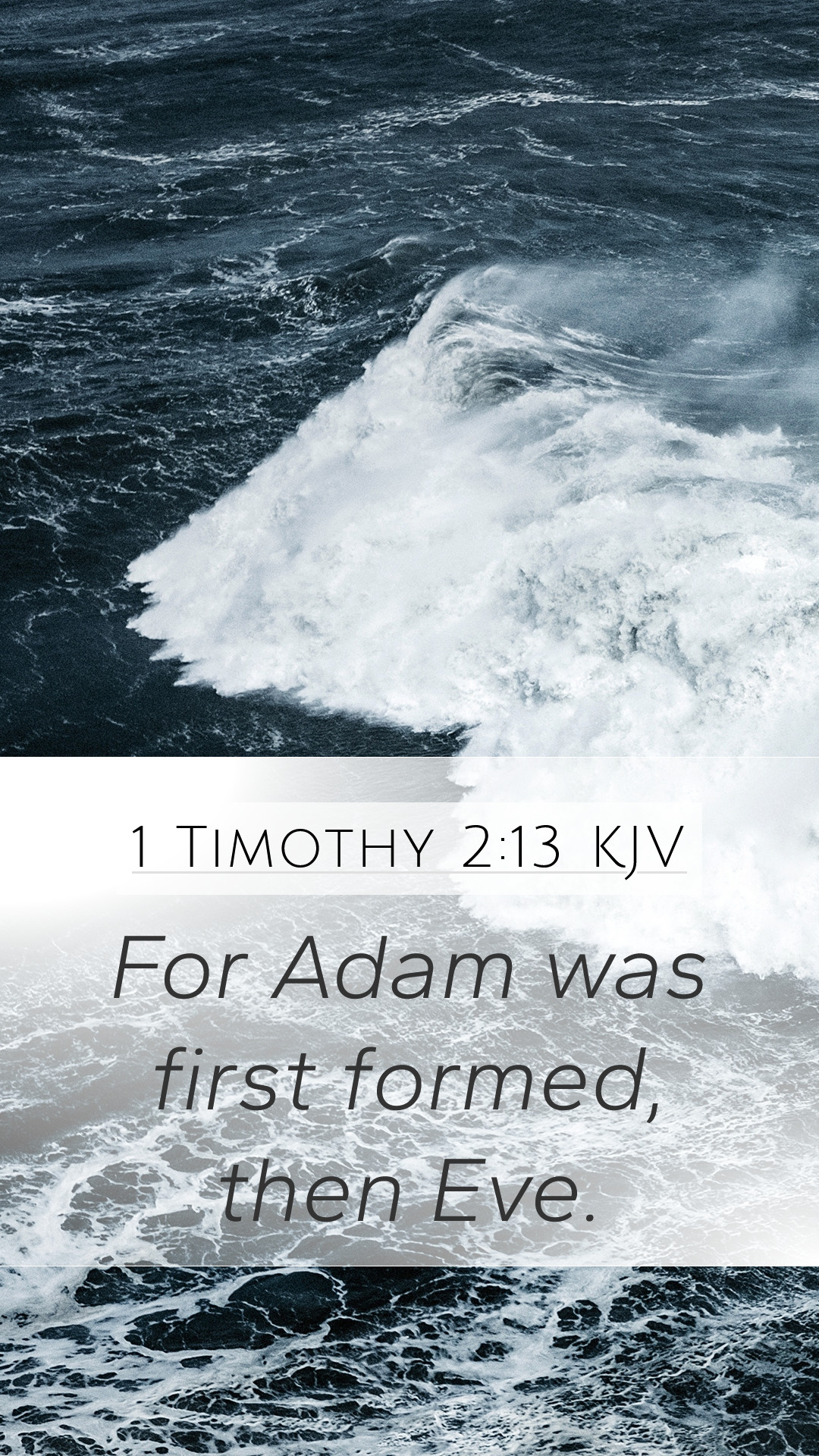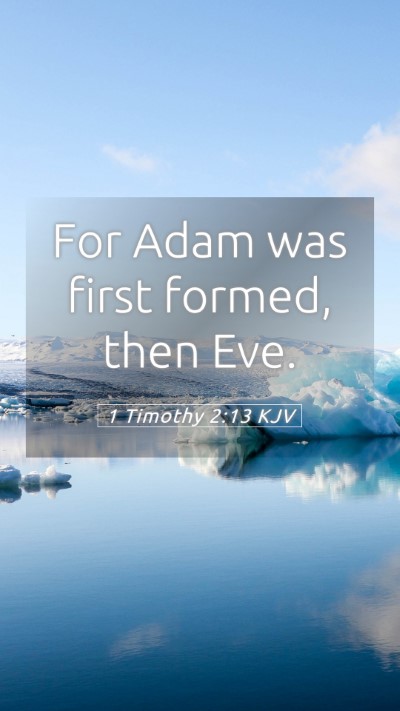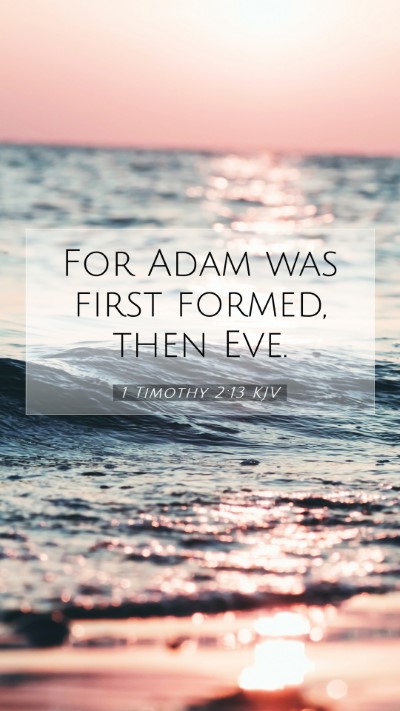Old Testament
Genesis Exodus Leviticus Numbers Deuteronomy Joshua Judges Ruth 1 Samuel 2 Samuel 1 Kings 2 Kings 1 Chronicles 2 Chronicles Ezra Nehemiah Esther Job Psalms Proverbs Ecclesiastes Song of Solomon Isaiah Jeremiah Lamentations Ezekiel Daniel Hosea Joel Amos Obadiah Jonah Micah Nahum Habakkuk Zephaniah Haggai Zechariah Malachi1 Timothy 2:13 Meaning
What is the meaning of 1 Timothy 2:13?
For Adam was first formed, then Eve.
1 Timothy 2:13 Bible Verse Meaning
Understanding 1 Timothy 2:13
1 Timothy 2:13 states, "For Adam was formed first, then Eve." This verse, found within the context of Paul’s guidance on worship and order in the church, is often examined for its implications regarding gender roles and creation order. Below, we explore its meaning using insights from reputable public domain commentaries.
Bible Verse Meanings and Interpretations
While interpreting this verse, it is crucial to consider both the cultural and theological contexts in which Paul was writing. Notable commentators, such as Matthew Henry and Albert Barnes, provide valuable insights.
-
Matthew Henry:
Henry emphasizes that this passage draws attention to the divine order established at creation. He argues that Adam's creation prior to Eve symbolizes responsibility and leadership ordained by God, insinuating a designed hierarchy within the relationship between men and women.
-
Albert Barnes:
Barnes focuses on the implications of this order, noting that it was not only a statement about the historical fact of creation but also an assertion of spiritual authority within the church. He points out that this distinction does not imply inequality but rather a specific function within God's plan.
-
Adam Clarke:
Clarke adds that understanding this verse requires a recognition of cultural context in the early Church. He suggests that this teaching underscores the importance of order and propriety in worship, reflecting a structured approach to communal and spiritual life.
Bible Verse Understanding Through Historical Context
The historical backdrop of Paul’s epistles provides significant insight into this verse's meaning. During the first century, Ephesus—the location to which Timothy was ministering—was influential but rife with challenges to traditional structures, especially concerning women's roles. Paul’s reminder of creation order acts as a corrective meant to maintain doctrinal integrity and moral conduct in worship settings.
Explanations and Applications in Modern Context
Today, this verse is frequently discussed in Bible study groups focusing on gender roles. It invites deeper exploration into how scriptural principles apply in contemporary life and relationships.
Key Takeaways from 1 Timothy 2:13
- Creation Order: The narrative of Adam and Eve illustrates divine order that informs spiritual authority.
- Contextual Understanding: Evaluating this verse through historical and cultural lenses enhances comprehension of avoiding misapplication in modern discussions.
- Church Conduct: The significance of this verse relates to maintaining order and respect within congregational settings.
Additional Bible Cross References
- Genesis 2:7-22 - The account of the creation of Adam and Eve.
- 1 Corinthians 11:8-9 - Discusses the order of creation and its implications for worship.
- Ephesians 5:22-33 - Explores marital roles and relationship dynamics based on creation order.
Conclusion
Understanding 1 Timothy 2:13 involves an examination of creation order, contextual factors affecting the early Church, and implications for contemporary worship practices. The insights from these commentators align to reflect a coherent interpretation that emphasizes divine structure and purpose.
This analysis is beneficial for anyone seeking bible verse meanings, bible verse interpretations, and bible verse explanations. For those engaged in bible study groups or seeking bible study resources, this understanding can enrich discussions and personal studies.


